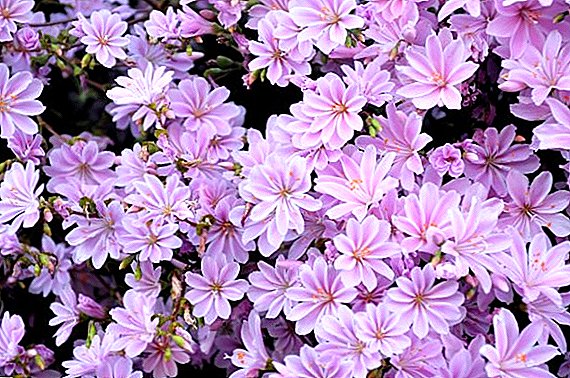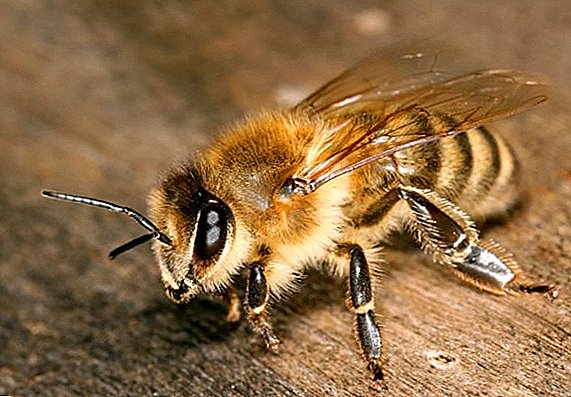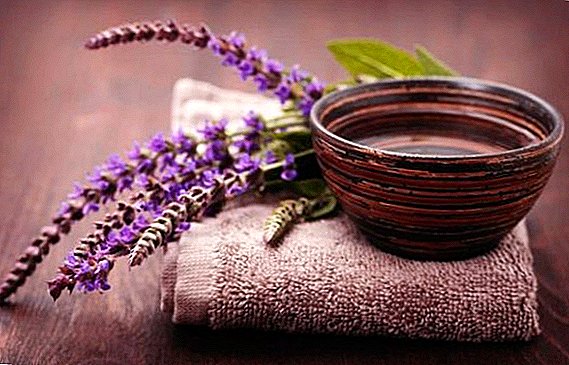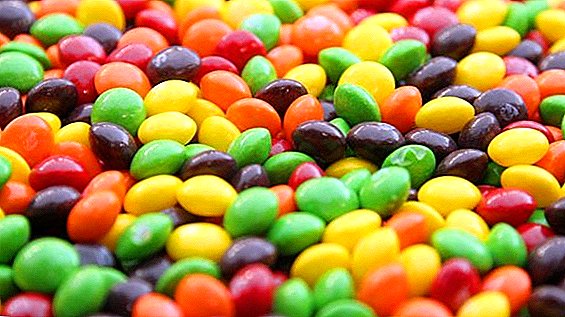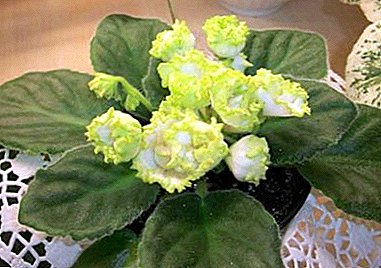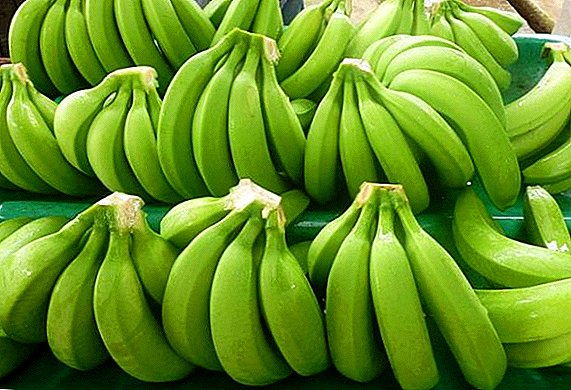 To us, people living far from the tropics, the question of what color a banana should be may seem strange, and the answer to it is obvious: well, of course, yellow! Yet it is not at all necessary. Bananas are also red, orange, black and ... just green! Here's the latest species of tropical fruit and talk.
To us, people living far from the tropics, the question of what color a banana should be may seem strange, and the answer to it is obvious: well, of course, yellow! Yet it is not at all necessary. Bananas are also red, orange, black and ... just green! Here's the latest species of tropical fruit and talk.
Chemical composition
Calorie green bananas primarily depends on the variety. 
Important! All the numerous types of bananas can be divided into two main categories: vegetables, they are larger, and dessert, small and very sweet. The main difference between the two is that the latter are eaten raw, and the former must be cooked.
Fruits with a hard peel of green or grayish color are called “platano” or “plantin”. They are the most calories in the environment of their relatives.
100 g of this fruit contains 90-145 kcal, and after it reaches full ripeness (yellowing), the caloric content increases greatly, reaching a range of 110-156 kcal.
In dessert fruit varieties, an inverse pattern is observed: as long as fruits have green peel, their caloric content stays at about 110 kcal per 100 g, but as they mature, the nutritional value decreases to 95 kcal.  The nutritional value of a green banana is 21% carbohydrates (starch, mono- and disaccharides), 1.5% protein and 0.7% fat (and the percentage ratio of saturated and polyunsaturated fatty acids in the product is about the same).
The nutritional value of a green banana is 21% carbohydrates (starch, mono- and disaccharides), 1.5% protein and 0.7% fat (and the percentage ratio of saturated and polyunsaturated fatty acids in the product is about the same).
Learn more about the benefits of bananas, as well as how to make and how useful dried bananas are.Approximately 74% of the fruit is water, and just over 1.5% is dietary fiber (fiber).
The vitamin composition of the fruit does not depend on its color.
Here are present:
- vitamin A (retinol and beta-carotene);
- Vitamin B1 (thiamine);
- vitamin B2 (riboflavin);
- vitamin B3 (nicotinic acid);
- vitamin B4 (choline);
- vitamin b5 (pantothenic acid);
- Vitamin B6 (pyridoxine);
- vitamin B9 (folic acid);
- vitamin C (ascorbic acid);
- vitamin E (tocopherol);
- vitamin K.

Among the minerals that bananas are rich in, first of all, macro elements should be mentioned:
- potassium - 348 mg;
- magnesium - 42 mg;
- sodium, 31 mg;
- phosphorus - 28 mg;
- calcium - 8 mg.
There are also some trace elements in the pulp - fluorine, selenium, iron, manganese and zinc. Essential amino acids such as lysine, methionine, tryptophan are also very important in the composition of the fruit.
However, all of the above is in both yellow and green fruits. But the main difference in the composition of the fruit, because of which scientists are increasingly talking about the greater benefits of green bananas, is the presence in them of indigestible (in scientific terms - resistant) starch. 
Important! Resistant starch has a very good effect on the bowels. It is not digested in the small intestine, entering the colon, where the fermentation process takes place. Thanks to this feature, the product allows you to maintain a feeling of fullness for a very long time. In addition, the process of reproduction of beneficial microflora in the large intestine, stimulated by non-digestible starch, significantly reduces the risk of cancer in this organ.
Thus, in terms of chemical composition and caloric content, green bananas, although similar to their yellow counterparts, at the same time, have certain advantages.
For this reason, experienced residents of tropical countries, and behind them, and many Europeans prefer to eat just such a variant of the fruit.
In popular literature, it is very often possible to find the statement that green bananas are some sort of special tropical fruit. In fact, it is not. Among the unusual colors of the peel of these fruits is not green.  Any yellow banana has such a color before ripening, and everything else is nothing more than a marketing ploy. But this does not mean that the statement about the benefits of green bananas is also fiction, just do not let yourself be fooled by overpaying for something that is not exotic.
Any yellow banana has such a color before ripening, and everything else is nothing more than a marketing ploy. But this does not mean that the statement about the benefits of green bananas is also fiction, just do not let yourself be fooled by overpaying for something that is not exotic.
Is it possible to eat green bananas
Of course, it is possible, but not in the way we used to do it.
Did you know? There are vegetable varieties of bananas that people in tropical countries (mainly Brazilians) cook and eat just like we do potatoes. These fruits sell green, so they are easier to transport and delay the moment of damage. However, having bought such a “vegetable-fruit”, the hostess first brings it to readiness in a dark place, having previously wrapped it with paper. When the fruit turns yellow, it is peeled (with a knife, it will not work with the hands, the skin is too hard) and fried or boiled, and then used as a side dish to the main dish.
It is no secret to anyone that bananas often fall on the shelves of our stores immature.  However, buying such a product, we risk nothing. You can wait until it turns yellow, but you can not do this. But with one condition.
However, buying such a product, we risk nothing. You can wait until it turns yellow, but you can not do this. But with one condition.
The fact is that green bananas can not be eaten raw. They must be subjected to heat treatment, because the starch contained in them has not yet had time to transform into sugar.
Eating such a fruit in its original form is the same as chewing raw potatoes. Such food is not suitable for our stomach, is poorly digested, besides it has an unpleasant bitter taste.
An immature dessert banana (these varieties, unfortunately, continue to remain rare), cannot be eaten raw, but can be fried.
So, if you are not sure that there is a “noble” exot in front of you, and not a fodder fruit removed from time to time, do not despair: for someone who was born and lived in a cold climate, this is excusable. Buy and boldly roast, boil, simmer or blanch! 
Than useful
So, let us consider the advantages of green bananas over ripe ones.
Important! One banana contains an almost total daily potassium fraction.
For the cardiovascular system
The benefits of immature fruits for the cardiovascular system are primarily determined by their high potassium content.
Hawthorn honey, hellebore, chervil, European wiper, cantaloupe, radish, roqueball, nettle have a positive effect on the cardiovascular system.Potassium plays an important role in maintaining heart rate. Normalizing blood pressure in the vessels, this chemical element provides prevention of atherosclerosis, hypertension, angina pectoris and other pathologies associated with impaired cardiac function.

For the digestive tract
Green bananas are a source of resistant starch, while eating ripe fruits, we get sugar. What is the difference between these two substances for our intestines, we have already mentioned.
But that is not all. Tropical fruit contains in its composition polyunsaturated omega-3 fatty acids, which, among other beneficial properties, have a beneficial effect on the production of enzymes in the stomach and intestines.
Omega-3 is also found in watermelon, green sweet pepper, actinidia, cashews, walnuts, lettuce, arugula.
In addition, there is a version (not yet completely proven) that green bananas can not only prevent the onset of a stomach ulcer, but even cure the disease.
The curative mechanism is that the fruit pulp, getting into the stomach, neutralizes the acid there and acts on its walls as a soothing ointment, activating the formation of mucus, which, in turn, protects the stomach from the destructive and wounding (ulcers) action of the acidic environment . 
Did you know? Oddly enough, from the point of view of botany, a banana is a berry, and the plant itself is a grass.
The active substances contained in green bananas stimulate all metabolic processes in the body, accelerate the work of the stomach and increase intestinal motility. This is largely due to the fiber in the fruit.
But if dietary fiber helps to avoid constipation, then with diarrhea, a green banana is also useful because it prevents the most dangerous consequence of this condition - dehydration.
Bilberry, pear, hazel, black chokeberry, cornel, and persimmon are also useful for diarrhea.
For muscular system
Here again, it is appropriate to recall the potassium. This element, along with calcium and phosphorus, also present in the fruit, plays a decisive role in maintaining the water-salt balance in the body, which, in turn, affects the muscular system.  In addition, to maintain muscle tone, prevent the occurrence of spasms, cramps, overexertion, the body needs to maintain an adequate dose of sodium. As we remember, this mineral can also be obtained from the pulp of tropical fruits.
In addition, to maintain muscle tone, prevent the occurrence of spasms, cramps, overexertion, the body needs to maintain an adequate dose of sodium. As we remember, this mineral can also be obtained from the pulp of tropical fruits.
For the nervous system
For the nervous system, the most valuable are the vitamins of group B contained in green fruits. Thanks to their effects, we cope better with stresses, get rid of irritability and anxiety, sleep better at night.
Also present in bananas is the amino acid tryptophan, which in the process of cleavage contributes to the synthesis in our brain of one of the most "pleasant" hormones - serotonin.
By the way, this substance does not just cause us a feeling of happiness, it is very useful for the muscular system and physical activity, but also thanks to it blood clotting is increased, that is, in a sense, bananas promote wound healing. 
For brain
Vitamins of group B exclusively beneficially influence work of a brain. They improve memory, increase concentration, relieve the feeling of fatigue.
The use of pumpkin, honeysuckle, sunberry, saffron, apples, rosemary, white currant improves memory.No less useful for our "head" and the above-mentioned potassium.
Therefore, people engaged in mental work, as well as students and schoolchildren during the exams, it is very useful to include in their diet snack of green tropical fruits.
For the condition of the teeth and bones
Calcium, necessary for teeth and bones, is contained in green bananas, but this element is not so much in them as, for example, in cheese or curd.
But these miracle fruits have the ability to retain calcium in the body, which is why their benefits for the skeletal system is quite noticeable. 
For skin
The vitamin and mineral composition of fruits is valuable not only for our internal organs, but also for our appearance.
To make the skin fresh and supple, you can use this product as food, or you can add it to various cosmetic masks and tonics, which have long been noted by experienced beauties.
Did you know? Alas, humanity is in danger of being banana-free soon. At the beginning of the twentieth century, a special type of fungus appeared in northeastern South America called the “Panamanian disease”; it annoyed banana plantations all over the world and completely destroyed the Gros-Michel variety, which is magnificent in its taste. The fungus mutates faster than scientists have time to “invent” new varieties of bananas that are resistant to the disease, and who will win this race remains a question.

Is it possible
Whatever we may say about the many beneficial properties of a banana, this product is still exotic and unusual for us.
For this reason, in certain periods of your life, as well as in the presence of certain pathological conditions, it is worthwhile to treat such foods with a healthy amount of caution, and it is better to consult your doctor beforehand. But we still make some reservations.
During pregnancy
The vitamin and mineral composition of bananas makes them very attractive for use during pregnancy. It is especially important for the expectant mother to receive the prescribed dose of folic acid, potassium, calcium and phosphorus.
Folic acid is found in foods such as shallots, green onions, quince, sea buckthorn, zucchini, black radish, kivano, peaches.And yet, any food experiments during this period is undesirable. Raw green bananas can cause serious trouble for the expectant mother with intestinal function, and you should be able to cook them properly.

Important! If, before the onset of pregnancy, a woman often ate green bananas, and is confident that she knows how to choose and cook them, there are no contraindications. But if you decide to discover a new useful product, it is better to wait for a more "safe" period.
With HB
The above applies equally to the period of breastfeeding. In this state, the connection between what a mother eats and the potential risk for a baby is not as direct as during pregnancy, but there is still some caution.
With diabetes
But with diabetes, green bananas are much safer than yellow ones, because they contain little sugar, and resistant starch does not lead to a sharp increase in blood sugar.
But this does not mean that such a product is fully compatible with the diet of a patient with diabetes mellitus, because we are still talking about carbohydrates.  In addition, the diseases of the first and second types are accompanied by completely different diets, so the approach to products must be individualized.
In addition, the diseases of the first and second types are accompanied by completely different diets, so the approach to products must be individualized.
Important! In case of diabetes, green bananas can be eaten only with the direct permission of a physician, in small quantities and following strict medical recommendations.For example, one of the properties of starch contained in green bananas is a very long period that accompanies the elimination of this substance from the body. For a diabetic patient this can be a serious problem.
Starch is also found in asparagus, turnip, melon, buckwheat, white beans.
When losing weight
A green banana is a great alternative to yellow for those who watch their waists. Since, due to the peculiarities of the chemical composition, this product allows you to maintain a feeling of fullness for a long time, during the period of weight loss this is just what you need. 
What can you do with them
If, having bought an ordinary banana, we, without thinking twice, remove the peel from it and eat the sweet tender flesh, with a green fruit such a simple number will not work.
You can try, as they say, but the taste is a cross between raw potatoes, apples, cucumbers and persimmons, and the smell is, to put it mildly, not too pleasant.
Important! Green bananas need to cook!
Here are two options. First: assume that we have a fruit, and make something sweet out of it. The second: like the inhabitants of a number of tropical countries, treat a banana as a vegetable.  Cooking methods can be anything: boiling, frying, stewing, baking or steaming, but in the first case we use sugar as the main spice and salt in the second.
Cooking methods can be anything: boiling, frying, stewing, baking or steaming, but in the first case we use sugar as the main spice and salt in the second.
Since you will not surprise anyone with sweet bananas, we recommend the recipe for a savory beer snack.
In addition to a few green bananas, we will need:
- cooking water - 1-2 liters;
- lemon or lime - 1 piece;
- garlic - 2-3 cloves;
- wine or apple vinegar - 2 tablespoons;
- vegetable oil (olive or sunflower) - 2 tablespoons;
- salt, pepper to taste.
First put the bananas to stew. While the water is boiling, we remove the skin from the fruit, making longitudinal cuts with a knife (be careful not to hook the flesh), since it will not work to clean unripe fruits with our hands.  Completely lower the fruit into boiling salted water, bring it to a boil again, and, removing the fire, leave to languish for 10 minutes.
Completely lower the fruit into boiling salted water, bring it to a boil again, and, removing the fire, leave to languish for 10 minutes.
Meanwhile, make garlic sauce. In the prepared dishes lay out finely chopped garlic, add oil, vinegar, salt, freshly ground black pepper. Finish the sauce with lemon (lime) juice and mix well.
Add to the water in which the bananas were boiled, a glass of boiled water to stop the boiling process, remove the saucepan from the heat and let the water cool a little. We take out the boiled fruits and cut them into rings about 1 cm wide.
Bananas laid out in a dish are dressed with garlic sauce. The dish is ready! You can use it as a snack, and you can serve as a side dish for meat or seafood. 
Did you know? In the 30s of the last century in Germany, bananas were declared “non-patriotic fruits”, since the funds necessary for their purchase were spent for other purposes. There was even a whole campaign among physicians who said that eating bananas would lead to blotting of guts.
Could harm
Banana poisoning is quite difficult. Compared with its exotic counterparts, this fruit is much less likely to cause allergies. Intestinal problems, bloating and flatulence are possible in the first place when, due to inexperience, we begin to eat green bananas raw.
However, in order to minimize possible risks, nutritionists recommend refraining from consuming this product along with large amounts of water.  Of course, it is dangerous to eat food containing chemical additives, but these risks apply equally to any products that survive long transport (intended for long-term storage).
Of course, it is dangerous to eat food containing chemical additives, but these risks apply equally to any products that survive long transport (intended for long-term storage).
For safety reasons, the fruit is recommended to be thoroughly washed under running water before you begin to clean.
Special care should be taken when it comes to people who have a history of varicose veins or thrombophlebitis. At risk are also those that suffered a heart attack or stroke. Способность плодов увеличивать густоту крови для подобных категорий граждан является весьма нежелательным свойством.
И, конечно, не стоит злоупотреблять зелеными углеводами. Превышая ежедневную дозу в два плода, мы имеем все шансы превратить такую пищу из полезной во вредную и даже опасную.  Bananas are a completely unique product, which is better to use in unripe than in ripe form. Perhaps it is not so tasty and fragrant, moreover, it is rather troublesome and inconvenient, but it is original and, most importantly, very useful.
Bananas are a completely unique product, which is better to use in unripe than in ripe form. Perhaps it is not so tasty and fragrant, moreover, it is rather troublesome and inconvenient, but it is original and, most importantly, very useful.


